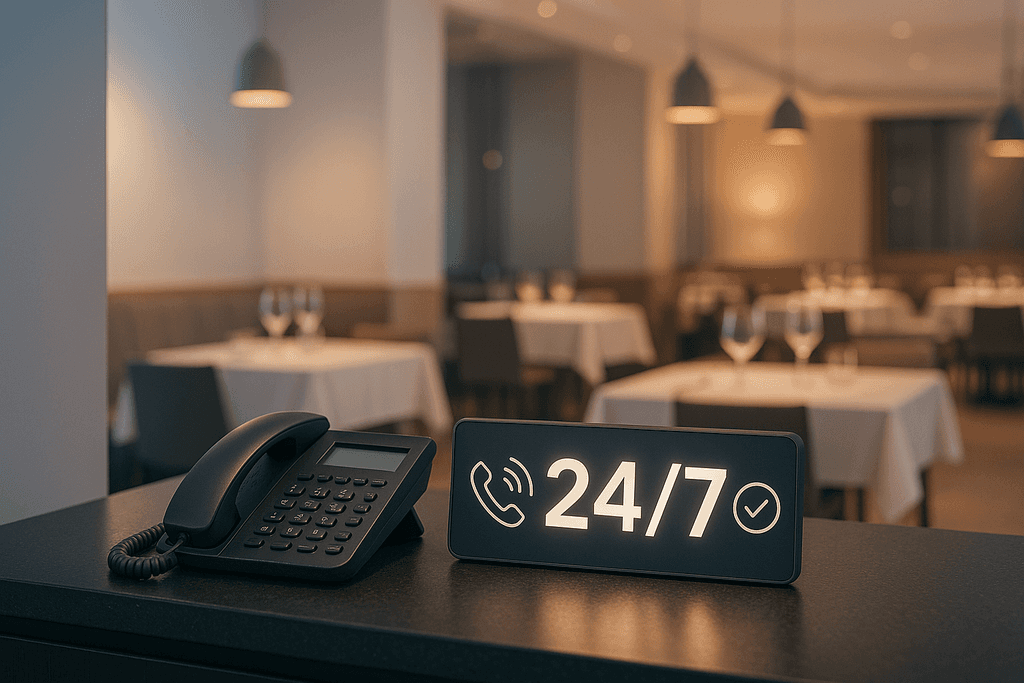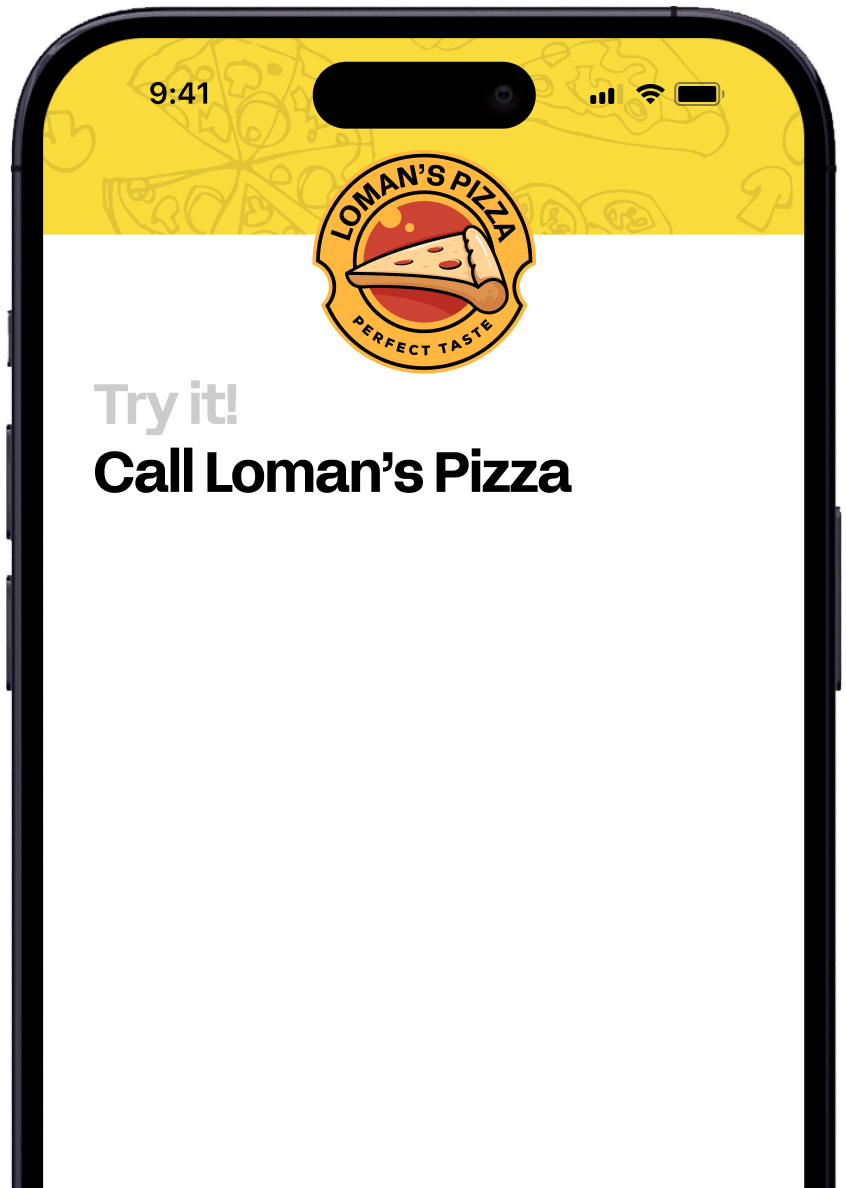July 5, 2025

Did you know that over 350 languages are spoken in U.S. homes? This linguistic diversity presents both challenges and opportunities for restaurants aiming to serve their communities effectively.
As cities become more culturally diverse, restaurants face increasing pressure to accommodate customers who speak different languages. This shift isn't just about being inclusive - it directly impacts the bottom line.
Traditionally, restaurants have relied on bilingual staff or translation services to bridge language gaps. However, these solutions often fall short, especially during busy hours or for less common languages.
This video highlights how AI is expanding accessibility across industries, including restaurants. AI-powered solutions offer a more scalable and efficient approach to language barriers.
The impact of language barriers on restaurant revenue is significant:
As the restaurant industry evolves, so do the tools available to address these challenges. AI-powered multilingual phone systems, like Loman.ai, are emerging as a promising solution. These systems can handle multiple languages simultaneously, ensuring no customer is left behind due to language barriers.
By embracing multilingual capabilities, restaurants not only improve accessibility but also tap into new markets and enhance customer satisfaction. The future of dining is inclusive, and technology is paving the way for seamless communication across languages.
Imagine a busy Italian restaurant getting calls from tourists who don't speak English. In the past, this could lead to confusion and lost business. But AI is changing the game for multilingual ordering.
Modern AI phone systems can detect and translate languages in real-time. This means a Spanish-speaking customer can place an order in their native language, and the restaurant staff receives it in English. Pretty cool, right?
These systems plug right into a restaurant's existing setup. So when an order comes in, it goes straight to the kitchen or point-of-sale system, just like any other order. This keeps things running smoothly, no matter what language the customer speaks.
Check out this video to see how AI is transforming restaurant phone systems. It's not just about taking orders - it's about making every customer feel welcome, no matter where they're from.
Good customer service is universal. With AI language support, restaurants can offer top-notch service to a global audience. Here's how it makes a difference:
Let's break down why this matters:
This kind of support can turn a one-time visitor into a regular. It shows that a restaurant values all its customers, no matter what language they speak.
So, does all this tech actually help restaurants? The numbers say yes. Let's look at some real impacts:
One pizza place saw a 15% jump in orders from non-English speakers after adding AI language support. That's a lot of extra dough (pun intended).
Another restaurant cut its customer service costs by 30% while expanding to serve speakers of 5 new languages. Talk about efficiency!
But it's not just about money. Customers feel more valued when they can order in their own language. This leads to better reviews and more word-of-mouth recommendations.
AI multilingual systems are making restaurants more accessible and efficient. They're breaking down language barriers and opening doors to new customers. For many eateries, it's becoming a key ingredient in their recipe for success.
Our product, Loman.ai, offers these multilingual capabilities and more. It's helping restaurants across the country serve a wider audience without breaking the bank. If you're curious about how it could work for your business, why not give it a try?
As AI language tech gets better, restaurants are finding new ways to talk to customers who speak different languages. This is a big deal for both local spots and big chains.
Here's what we might see in the coming years:
But it's not all smooth sailing. There are some bumps in the road:
These challenges aren't stopping progress though. Restaurants using multilingual AI are seeing some big changes:
In the long run, this tech could change what customers expect when they call a restaurant. They might start to assume that every place can take their order in any language. This could push more restaurants to get on board with AI phone systems.
At Loman.ai, we're working on making our AI phone agent speak multiple languages smoothly. This way, restaurants can serve more customers without hiring extra staff or language experts.
As this tech grows, we might see a world where language barriers at restaurants become a thing of the past. That's good news for both diners and restaurant owners looking to grow their business.
Multilingual AI phone systems are changing the game for restaurants looking to serve a diverse customer base. By breaking down language barriers, these tools open doors to new markets and boost customer satisfaction. Restaurants using AI-powered language solutions often see increased orders, fewer missed calls, and happier customers.
But it's not just about handling more languages. These systems work 24/7, take accurate orders, and free up staff to focus on in-person service. For example, Loman.ai offers an AI phone agent that can handle multiple calls at once in various languages, integrating seamlessly with existing POS systems.
As the restaurant industry evolves, staying competitive means embracing tech that enhances the customer experience. Multilingual AI phone systems are becoming a must-have for restaurants aiming to grow and thrive in today's diverse market. Curious about how this tech could work for your restaurant? Check out some real-world examples and case studies to see the impact in action.
Most advanced AI phone systems can handle multiple languages simultaneously. Loman.ai, for example, supports over 100 languages, allowing restaurants to cater to a diverse customer base without language barriers.
Not at all. Modern AI phone systems are designed for easy setup and integration. They typically require minimal technical knowledge and can be up and running within a day. Many providers offer step-by-step guidance and support throughout the process.
AI translation accuracy has improved significantly in recent years. For restaurant-specific terminology and menu items, many systems boast accuracy rates above 95%. They're trained on extensive culinary databases and can handle complex orders with precision.
Yes, most AI phone systems are designed to integrate seamlessly with popular restaurant POS systems. This allows for smooth order processing and real-time updates across your restaurant's operations, regardless of the language used by customers.
Restaurants often see significant cost savings by implementing multilingual AI systems. They reduce the need for multilingual staff, decrease order errors, and can handle high call volumes without additional labor costs. Some restaurants report savings of up to 30% on phone-related expenses.
Customer reactions are generally positive, especially when the AI system is efficient and accurate. Many appreciate the quick service and language options. To ensure a smooth experience, it's important to choose a system with natural-sounding voices and clear communication abilities.

Enter your information in the form to receive a call from Loman and place an order like a customer would!